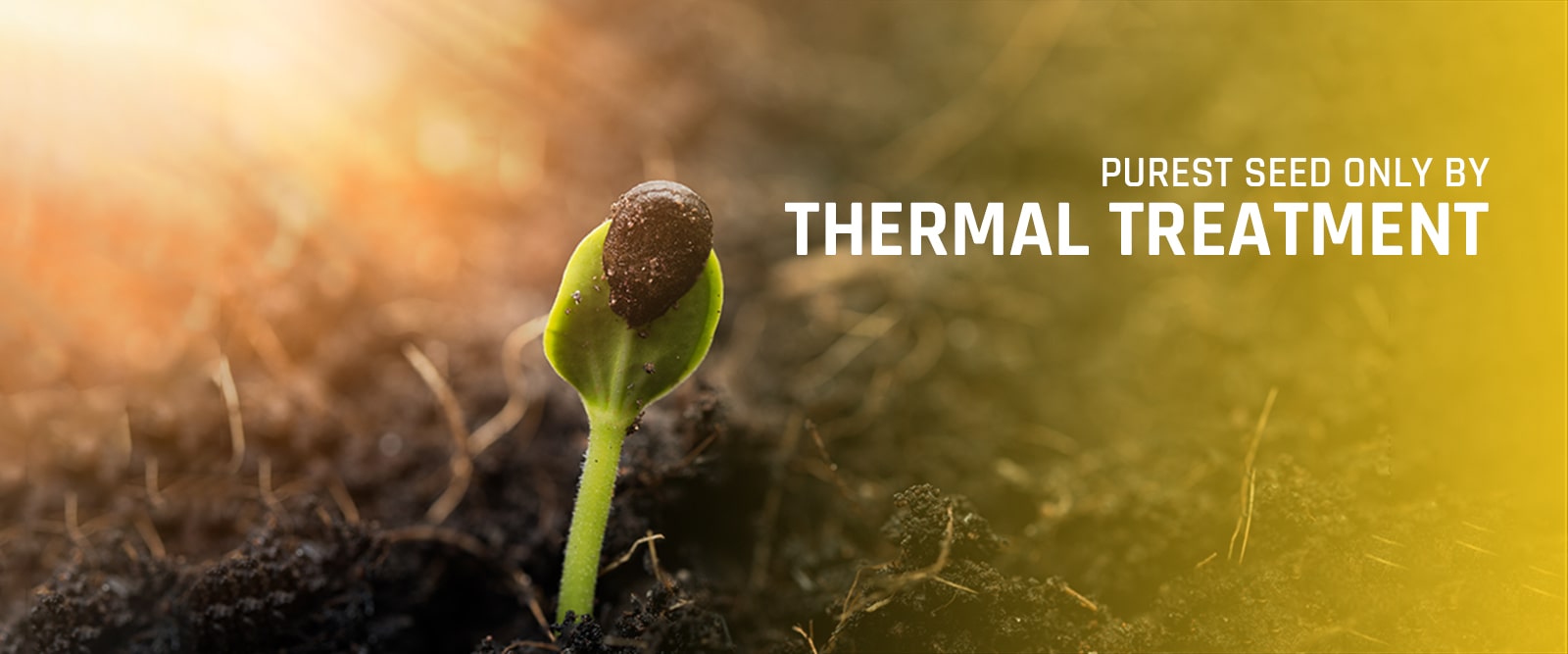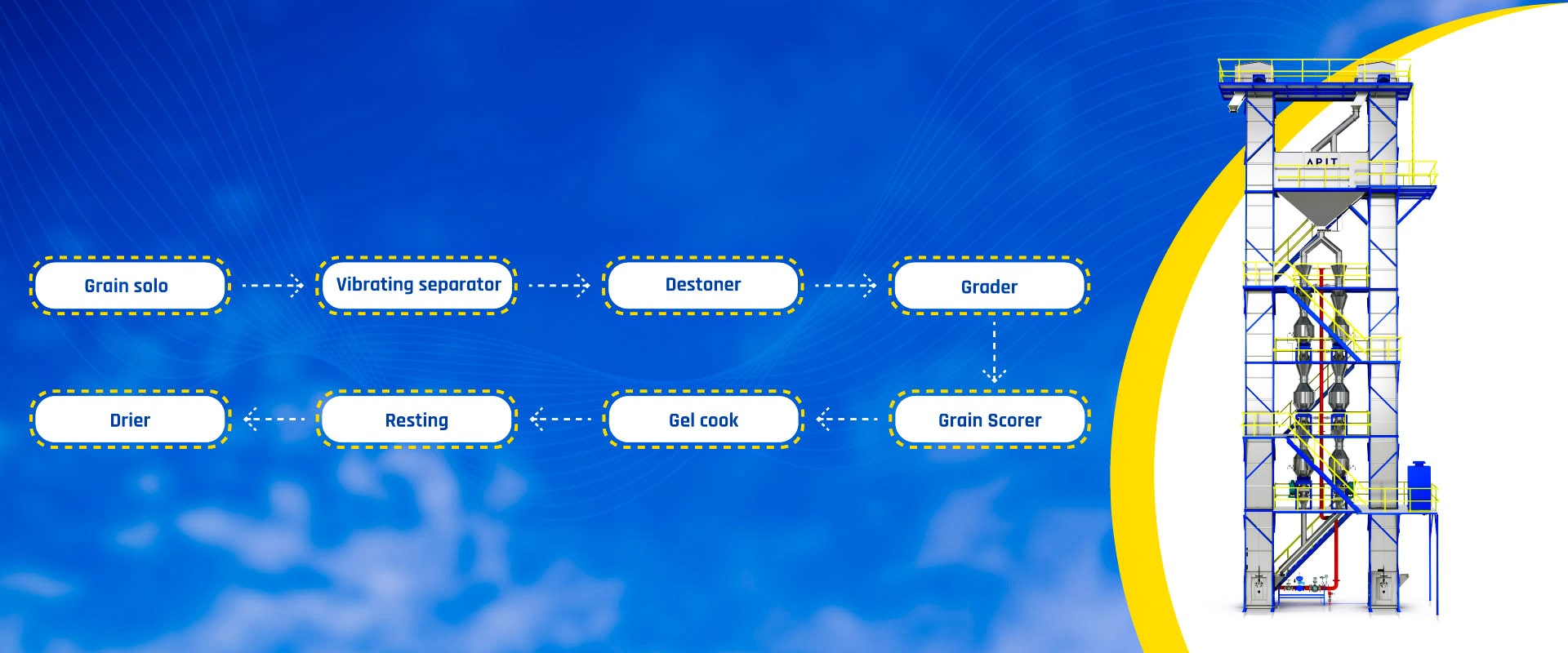
Why Is it Important?
- Reliable substitute for chemical treatment by virtue of thermal treatment
- Highly effective against seed-borne pathogens- both Bacteria and Fungus
- Increased pest resistance and infestation
- Greater crop yield results in comparison to chemical treatment
- Higher compliance with organic farming rules
- Exceptional potency of germinating plants
- Best suited for organic farming
Thermal Seed Treatment Process

The thermal seed treatment process starts with the cleaning process for extraneous matter and further the seeds are graded to obtain uniform sized grains. The grains are then subjected to tempering in the gel cook station and subsequently dried after a brief resting period.
Major Outcomes
-
- Sterilization of grains or seeds for food and feed consumption
- Environment-friendly approach
- Significant reduction in the mycotoxin levels
- Decline in storage pests
- Effective against rice fungal pathogens mainly

